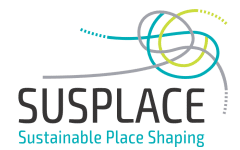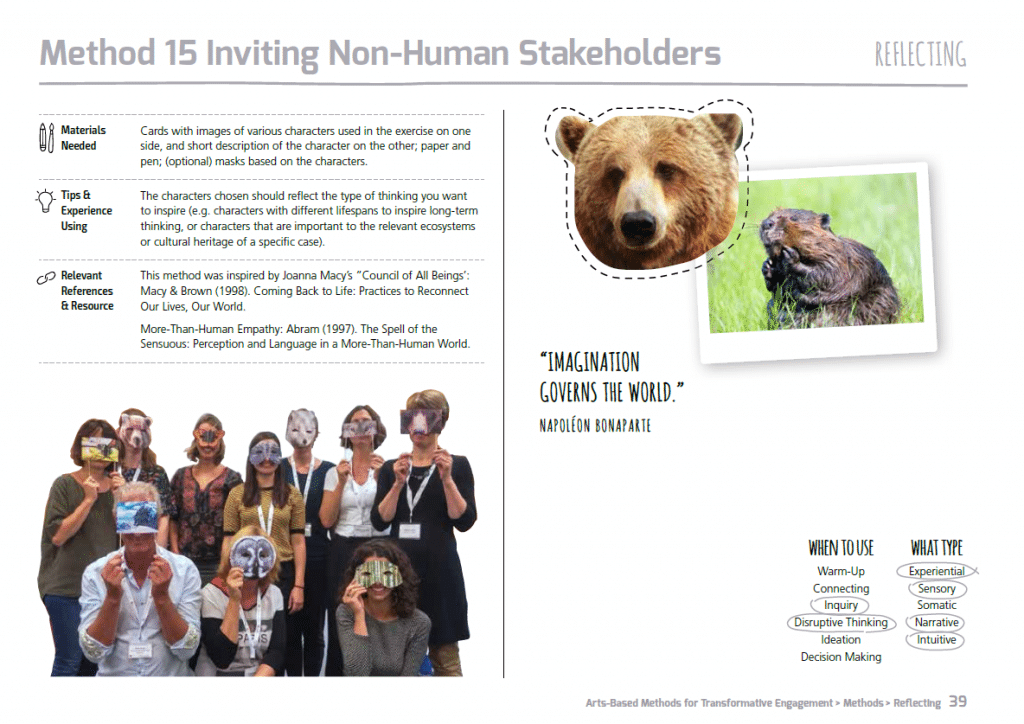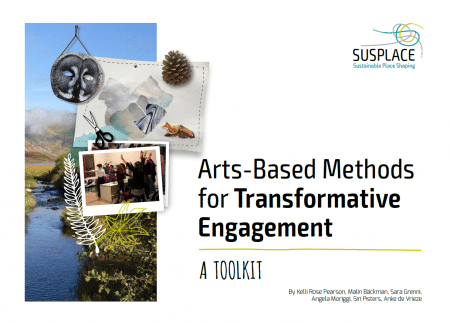
Written by Angela Moriggi and Kelli R. Pearson
“The only way to approach such a period in which uncertainty is high and one cannot predict what the future holds, is not predict, but to experiment and act inventively and exuberantly via diverse adventures in living” ~ C.S. Holling
In October 2016, six of us got together on a Sunday afternoon, moved by the desire to combine forces and experiment with creative and arts-based approaches to “sustainable place-shaping.” We wanted to focus on the cultural and psychological dimensions of sustainability and also practice with methods that make us that feel energetic and inspired. We wanted to go beyond debates that center around reducing our ecological footprint or creating technological solutions, and find ways to access our emotions and values while acting “inventively and exuberantly” (as Holling says ). Additionally, we were motivated to create something practical that change-makers and local leaders can use in their work.
Inspired by Kelli’s research on the arts and “imaginative leadership” and empowered by a training on facilitation methods given by Royal HaskoningDHV, we designed a workshop based on the structure of Theory U. We combined and integrated a variety of arts-based exercises intended to help participants view a case study or sustainability issue from different perspectives, such as a more-than-human perspective or from an expanded sense of time. As a result of implementing this workshop in multiple locations, we developed a toolkit describing our methods.
The Toolkit
Beautifully designed by Ocelot Ontwerp, the toolkit is a rich and user-friendly resource with over 90 pages of tips, resources, workshop outlines, and detailed instructions for nearly 30 specific methods. Informing the toolkit is feedback from the diverse groups of people who joined us in our experimentation over the last few months. The workshop was launched officially in August 2017 at Transformations 2017, an international conference in Dundee, Scotland, and since then, artists, researchers, students, practitioners, educators, policy-makers, as well as our SUSPLACE colleagues and supervisors, have participated in sessions all over Europe, helping us fine-tune our methods and the workshop design. We were happy, and even surprised, to meet with such enthusiasm and positive feedback throughout.
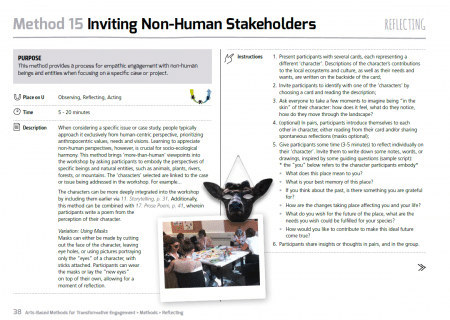
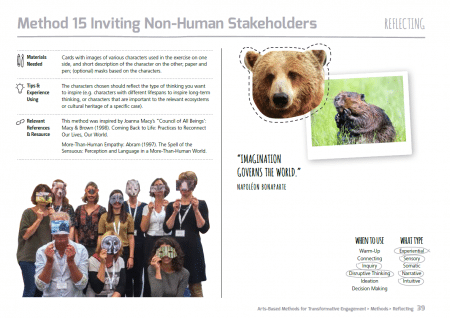
Join us in this journey!
We are eager to hear your experience using and adapting these methods. Don’t hesitate to be in touch!
